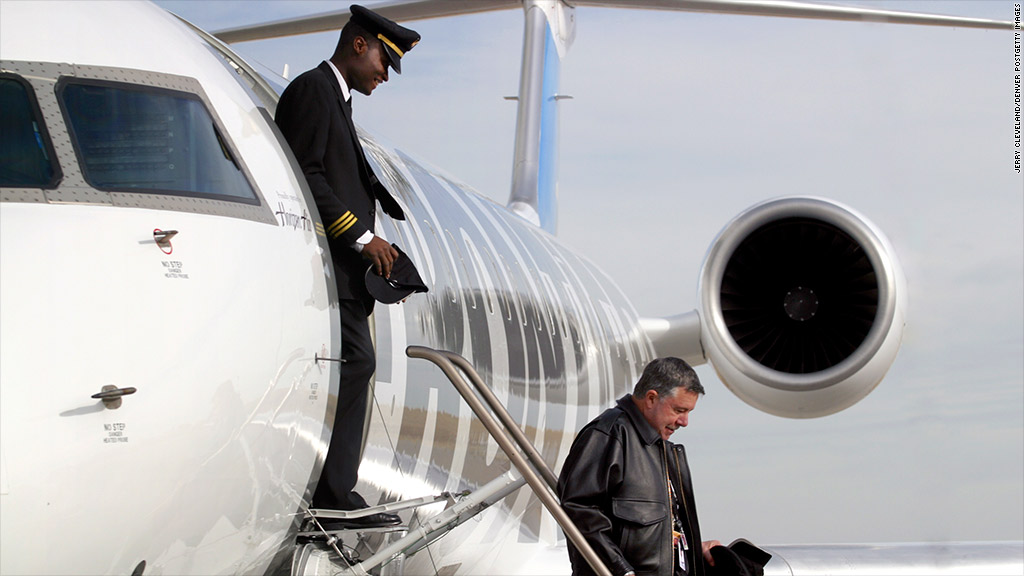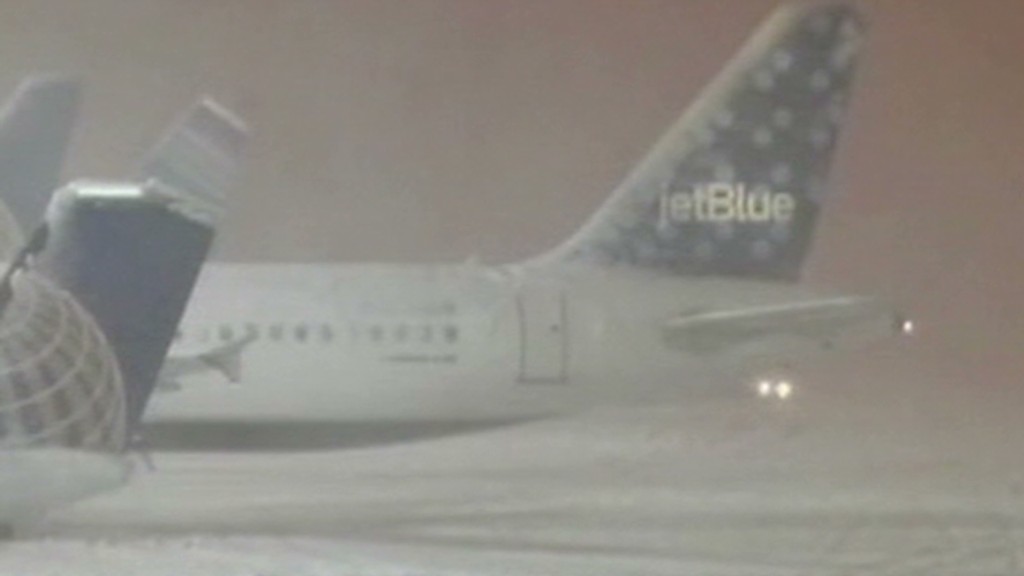
New safety rules that played a part in JetBlue Airways' epic meltdown this week could further stretch the industry's supply of pilots, and cause problems at local airports nationwide.
That's because busy regional airlines, which carry a big chunk of all U.S. passengers, are particularly vulnerable to the same rules that felled JetBlue (JBLU).
At issue is an FAA policy that went into effect on Saturday requiring more rest for pilots.
Experts say the rules will mean more flight cancellations in bad weather, since weather-related delays will eat up the fixed number of hours that pilots are allowed to be on duty.
More downtime will also exacerbate an existing shortage of pilots, which could eventually cost some cities service altogether.
Many major airlines are not really affected by the rules because their union contracts already require similar rest periods for pilots. But JetBlue's pilots are not in the union, so the carrier had to make adjustments when bad weather backed up flights.
And many regional carriers might have to follow suit. While many of them are unionized, their pilots don't have the same strong contracts as those at the major carriers. So they too will have to start giving pilots bigger breaks.
Related: JetBlue's winter nightmare
Regional jets operate about half of the nation's passenger flights and carry about 25% of fliers.
What's more, about 70% of U.S. cities -- from Bangor, Maine, and Bakersfield, Calif., to Shreveport, La., and Kalamazoo, Mich. -- are served only by regional outfits.
Regional airlines operate under contracts with the major carriers under names such as American Eagle and Delta Connection. They typically carry passengers between smaller airports and the major hubs.

The new rest rules were aimed at combating the problem of pilot fatigue, after the crash of a regional jet in Buffalo in 2009 that killed 50 people.
They require a minimum of 10 hours of rest before a pilot reports for duty, and place weekly and monthly limits on the amount of time a pilot can work.
The upshot: Airlines as a whole will have to hire an estimated 8% to 10% more pilots, according to airline consultant William Swelbar.
Related: US Airways-American deal - What it means for fares
"The industry will be required to have more pilots on hand today to do the same amount of flying as it did a week ago," he said.
For regional carriers, which have around 16,000 pilots, that will be a costly and difficult requirement.
Regional carriers already have a hard time hiring pilots because they pay a fraction of what the major carriers offer.
"Communities that rely on regional airlines are going to lose service -- it's just a question of where and how much," said Roger Cohen, president of the Regional Airline Association, the industry trade group. "There just aren't enough pilots."
Two other relatively new rules, unrelated to the rest policy, are making the pilot shortage at regional carriers more acute. One has led to a jump in the number of pilots retiring, while the other has prolonged how long it takes to hire new pilots
Related: More people are flying, with fewer complaints
"I'm all for the new rules. They're great for safety," said Kit Darby, a consultant who helps pilots with their careers. "But [they] ignore the tenets of business, which is that you need the pilots to do the job. The rules should have been phased in."
Darby said it's too soon to say which cities are at risk of losing air service altogether. He believes eventually the airlines will have to decide which cities are no longer profitable enough to justify using the limited supply of pilots.
"It's not something that typically happens the day the rule takes effect," he said. "But it will happen when the regionals run out of pilots."

